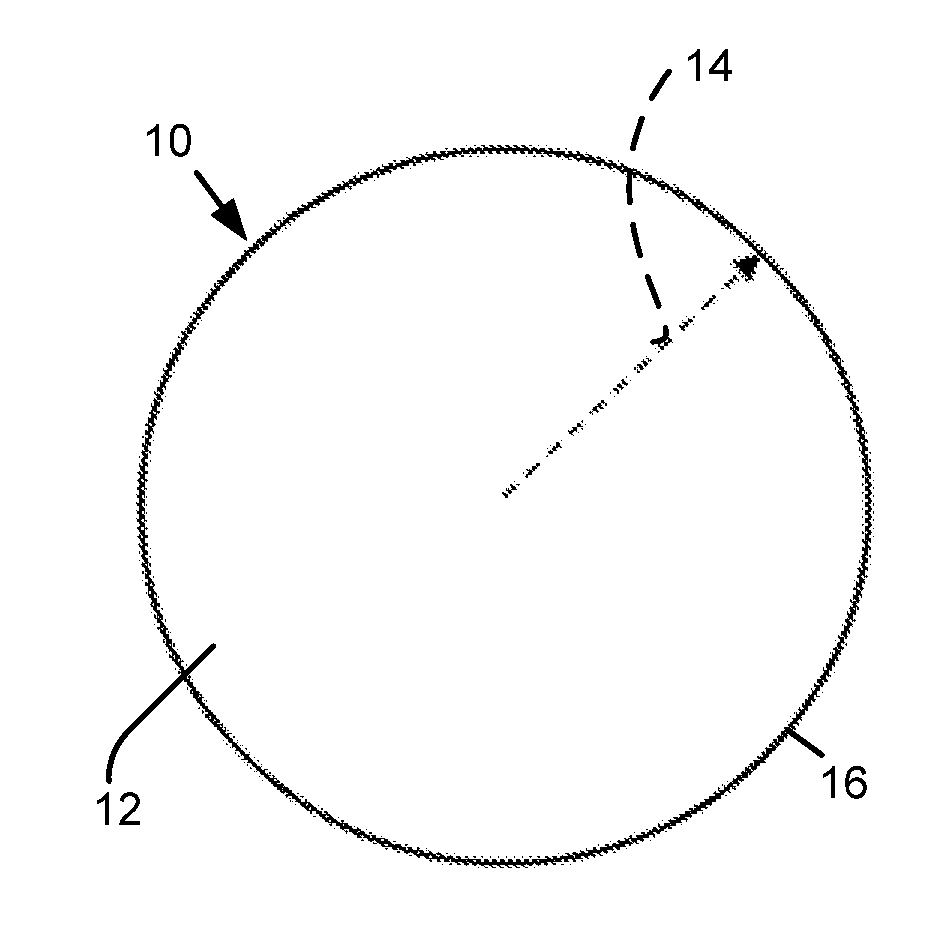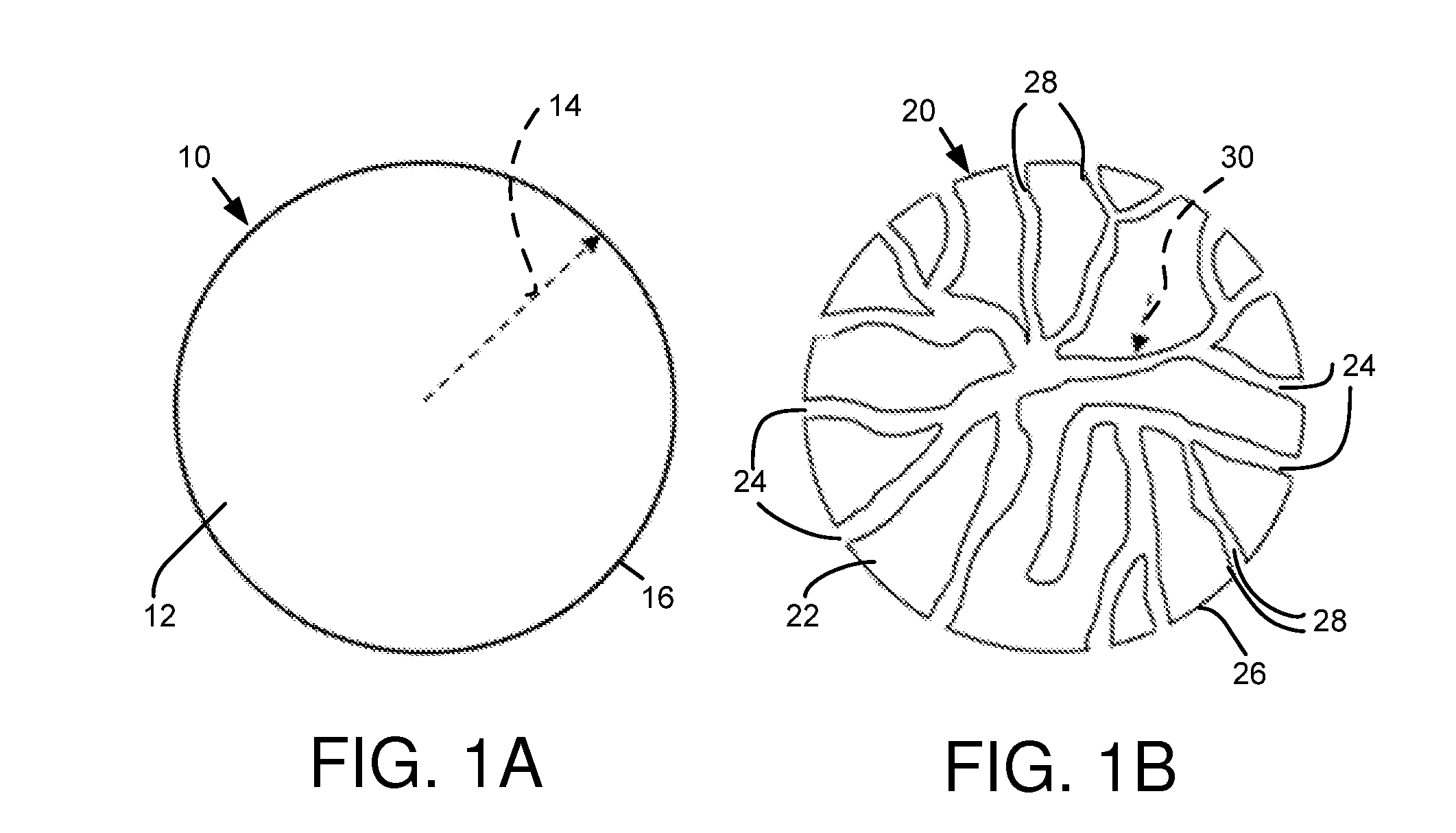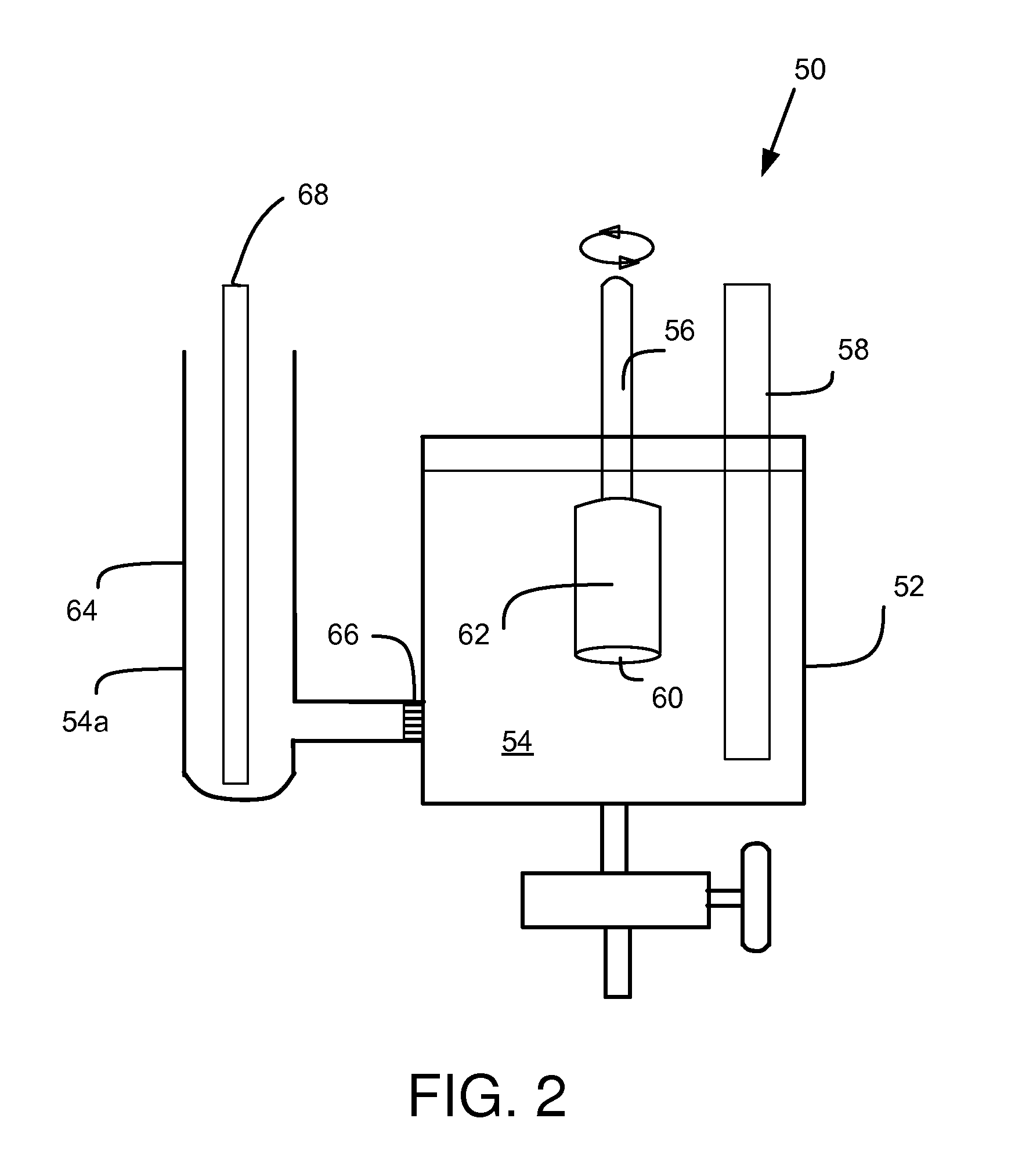[0007]All of these rubber-containing separators for deep-cycle batteries have the advantageous effects of promoting long cycle life by controlling water loss during charge. During the charging of the lead-acid storage battery, the active material on the negative
electrode is first reduced from
lead sulfate to lead. As the available active material is converted to lead, the potential of the
electrode is lowered. As the potential on the negative electrode drops, an increasing fraction of the charging current is involved in the evolution of
hydrogen by reduction of the
hydronium ions present in the adjacent
electrolyte. Meanwhile, at the positive electrode, the charging operation is oxidizing the active material from
lead sulfate to
lead oxide, accompanied by a rise in the potential of the positive electrode. As the potential rises, an increasing fraction of the charging current is involved in the production of
oxygen by oxidation of adjacent water molecules and the production of
hydronium ions to replace those consumed at the negative electrode. The net effect of the evolution of
hydrogen at the negative electrode and the evolution of
oxygen at the positive electrode is the consumption of water from the
acid electrolyte. This loss of water results in an increase in the concentration of the
sulfuric acid, an increase in the resistance of the battery, and eventual failure. By reducing the rate of water loss from the battery, rubber-containing separators result in extending the service life of deep-cycle batteries.
[0008]Conventional rubber-containing separators have several drawbacks. These separators have higher than desired resistance to ionic flow, are difficult and costly to produce, and are limited in supply. Thus, there have been several attempts to overcome these drawbacks. One such approach is described in U.S. Pat. No. 5,154,988 and uses a
coating of
natural rubber latex applied to one or both sides of the separator sheet. The
coating may be achieved by any of a number of common coating methods including spraying,
dip coating, roll coating, draw rod coating, and gravure coating. After application of the latex, or a dispersion of latex in a suitable carrier liquid, the separator is thoroughly dried. One major drawback of this approach is that the spraying and
drying steps add cost to the separator and, therefore, cannot be performed economically. Another major drawback is that the
natural rubber coating will cover at least a fraction of the pores on the surface of the separator and result in higher resistance to
ion flow through the separator and in reduced performance of the lead-acid storage battery.
[0009]Another approach is described in U.S. Pat. No. 6,242,127 and overcomes some of the drawbacks of the above-described coated separator by adding to a silica-filled
polyethylene separator of a type commonly used for lead-acid storage batteries in SLI service, a quantity of powder obtained by pulverizing a cured silica-filled rubber separator of the traditional type. This approach combines the benefits of the silica-filled polyethylene separator, such as
low resistance to
ion flow and lower cost, with those of the rubber-based separator, such as a reduction in water loss and longer cycle life in lead-acid storage batteries in deep-cycle service. An obvious drawback to this approach is that it relies on the destruction of rubber-based separator material to make the powder used in the modified formulation of the silica-filled polyethylene separator. Such material, if made from waste or rejected silica-filled rubber separator, is likely to be in short supply or, if made from silica-filled rubber separator produced expressly for pulverization, prohibitively expensive. Another drawback of this approach is that the porous filler contains on a volume basis in the finished separator little of the
active ingredient that contributes to the beneficial
electrical performance of the battery. Moreover, the porous nature of the
filler particle results in rapid
diffusion of the active ingredient out of the particle, thereby reducing its long term effectiveness in the battery.
[0010]Despite the advances made in the art with respect to improved separators containing some form of rubber, there continues to be a need for a low-cost, low-resistance separator that also limits the water loss and improves the cycle life of lead-acid storage batteries used in deep-cycle service over long application times of several years.SUMMARY OF THE DISCLOSURE
[0011]The disclosed microporous silica-filled
polyolefin separator has a material composition that includes a fraction of cured rubber powder exhibiting low or no
porosity. This cured rubber powder fraction may also contain one or both of silica and
carbon black, in addition to the cured rubber component. The cured rubber powder may be obtained from a number of sources, and a preferred powder is available from Edge Rubber, Chambersburg, Pa. This cured rubber powder is a material derived from one or both of passenger and
truck tires. The
mass ratio of cured rubber powder to the polyethylene in the separator can vary from about 0.01 to about 1.0.
[0012]The cured rubber powders used in the disclosed
polyolefin separator exhibit the properties of increasing the
hydrogen evolution overpotential on the negative
lead electrode and of decreasing the effect of
antimony deposited on the negative electrode of the lead-acid battery. Incorporation of these cured rubber powders into the formulation of a microporous silica-filled polyethylene separator results in improved electrochemical properties in deep-cycle lead-acid batteries.
 Login to View More
Login to View More 


